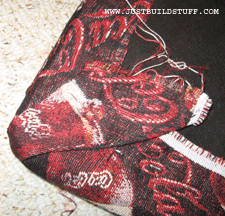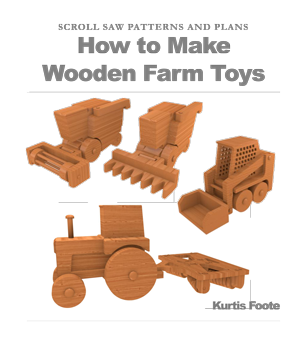Solder Snaps onto an Arduino Lillypad
I have been researching the best way to make some interesting costumes for my kids. The most popular microcontroller for wearables currently is the Arduino Lillypad. I picked one up to start experimenting with, most people sew the Lillypad to the project, but I noticed others were using snaps. I had an Arduino Lillypad I had ordered earlier and I went to Jo-Ann Fabrics and picked up a pack of snaps to see how hard it was to solder a snap to the Lillypad.
Arduino Lillypad- Link to buy at Amazon
Drtitz Snaps- Link to buy at Jo-Ann Fabrics, Link to buy at Amazon
How to Make a Sock Puppet
In an effort to amaze my children with my puppet making abilities I made this puppet from one of my old socks and now I am going to show you how I did it. You can watch the video or follow along with the pictures below.
The only tools needed for this project are a scissors, and a heat gun.
The main ingredient of this puppet is a sock, pick a sock that fits your hand and has some nice puppet like texture. Be careful not to pick a sock you are going to miss, as I did. I used one of my old sock and I love the puppet is has become, but I have to admit I also miss my socks.
The other materials I used are some felt, an old cereal box, a couple googly eyes and 2 wooden balls.
To start I flattened a cereal box and traced my fingers on one of the seams to make the shape of a mouth. I am using the cereal box paperboard to stiffen the mouth so it’s not as floppy as the rest of the sock. Test fit and trim the paperboard as needed.
After doing some final trimming to size I then cut a piece of felt slightly larger than the cardboard mouth. I then used my hot glue gun to glue the felt to the the paperboard mouth.
Again I did a little test fitting and finally it’s time to glue in the mouth. I applied glue to the back of the mouth and held it in position till it was dry. Now this was a thick sock that isolated my hand from the hot glue. I would not attach the mouth this way with a thinner sock, I would have either used a lower temp glue or not have my hand so close to the hot glue.
I apply a seam of glue around the mouth to keep looking good and not show the layer of felt or paperboard.
Now the finish touch is the eyes. I had 1” wooden balls in my pile of craft parts so I used those, I was originally looking for ping pong balls. I glued the wooden balls on the top of the puppet, by just shooting some hot glue on the sock and then pressing the ball on.
The googly eyes went on much the same way. As you can see a little glue and stick on a googly eye.
And that’s it the puppet is complete. Very simple but I like it. And, I assume that sooner or later my kids will stop being annoyed as I walk around the house talking in puppet voices.
How to Make a Doll Sleeping Bag
My daughter’s dolly needed a warm place to sleep, so we went to our scrap fabric drawer and pulled out a scrap of fleece with a fun pattern larger enough to fit the doll. We placed Anna (the doll’s name) on the fabric and sized it to her.
You can see below that we folded the fabric to create a bag on the bottom for the doll to sleep in and into a space for a pillow on the top.
Now make sure that the fabric is inside out and all the edges are straight with the openings folded over approximately 1/4 inch. Now it’s time to dig out the sewing machine. (I don’t have much of a sewing machine, but it gets the job done. It’s a Shark Mini Sewing Machine and they cost around $20.) Sew each side of the sleeping bag two times for a little extra stregth.
Next I used fabric glue to glue the lip down.
We then flipped the sleeping bag right side out and commenced to stuff the pillow area with some excess fabric in order to make a fluffier pillow.
Finally we glued the seams of the pillow area together the same way that we glued the lip on the other side and the dolly had a warm place to sleep.
Simple Snowman Fleece Tie Pillow!
Looking for a holiday craft to do with your kids? This easy to make snowman pillow is a fun project that doubles as a festive holiday decoration. Plus it will be a great place to rest your head if you start to experience holiday fatigue.
Many of our readers likely have seen or made a fleece blanket with the frayed ends tied together. In this project, justbuildstuff.com is going to use a similar process to make a pillow from fleece with a snowman print.
To build this project we used the following-
- 2/3 yard of fleece
- 1- 14 inch pillow
- scissors
- tape measure
To begin, we took the 2/3 yard piece of fleece (it should measure 24″ by 36″) and cut it into two 24″ squares. These two pieces of fleece will be used to cover a 14” square pillow purchased from a local fabric store. After the two 24” squares of fleece were cut, we snipped a five” square from each of the four corners of the fabric so that the center measured a 14” square (the same as the pillow). This is shown in the photo below.
Then we cut each side into 3/4 ” wide strips as shown in the photo below.
When the edges were cut, we faced the best side of each piece of fleece outward, placed them on top of each other, and begin tying the 3/4″ strips together with square knots. When three sides were tied, it was time to stuff in the pillow as shown below.
After the pillow was inserted, we tied the final side. It was simple, fun, and it looks great.
Recover a Stool With Fun, New Fabric
My sister-in-law is the queen of finding deals, and this justbuildstuff.com project is a result of her finding an incredible deal on a footstool at a rummage sale. The footstool was in great shape and she wanted to add a little flare to it by recovering it with fabric she had found that displayed a Coca-Cola theme (her favorite beverage).
Disassemble
To begin the recovering project, we first flipped the stool over to remove the screws that were holding the seat top to the base (photo below).
Cut the Fabric
Next, we used the cover to size the fabric piece that we needed to cut (see photo below). The fabric needs overlap each side by at least an inch or two so that there is room to staple the fabric to the seat top. For this project we left the existing fabric on the seat cover because it was in good condition and would provide a good base for the new fabric. Some recovering projects may require removing the old cover and replacing the pad and batting.
Now that the fabric is sized it is time to cut it out. To get nice straight lines, the fabric was folded to make a visible crease. The crease line was cut with a scissors as shown in the photo below.
Attach the Fabric
Making sure the design side of the fabric was facing down, we placed the seat cover onto the middle of the fabric. We then pulled the fabric tightly up over the side and put a staple in the middle, as shown in the picture below.
The trickiest part of getting the cover fabric to look good is in the corner as seen in the photo below. You need to make sure to fold the fabric and staple each corner in the same manner. After a corner is stapled, flip the seat over to ensure that the corners look the same as the ones you previously stapled.
Put the Stool Together
Now that all for corners are stapled and the cover is looking extraspecially wonderful with the new fabric, it’s time to reattach the cover to the legs of the stool in much the same way as they were removed. Try to find the original holes and use the original screws if possible.
After the legs are reattached the stool is finished except for cleaning up the frayed edges on the bottom side with a scissors.
































